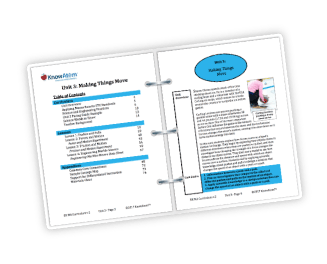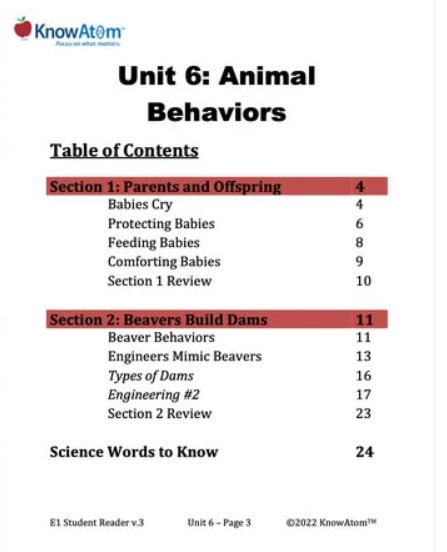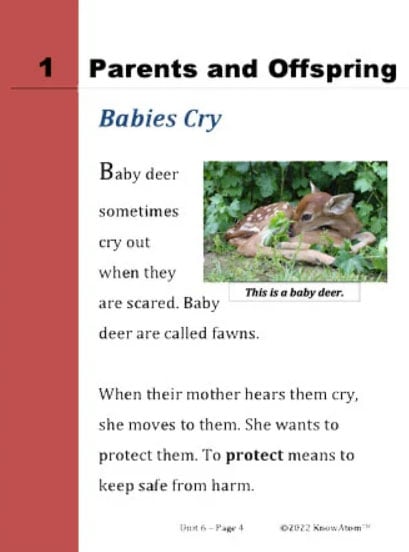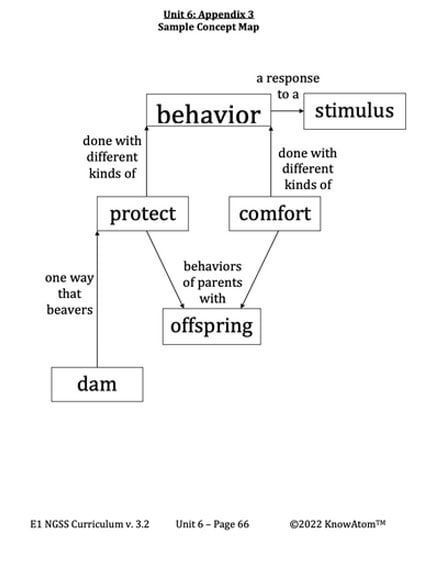In this lesson, students engage in an engineering challenge by designing and building prototype dams to solve the problem of protecting a town from a river’s flood water.
In this unit, students explore the science phenomena of animal behaviors of parents and offspring that help the offspring survive. This page is a high-level extract of lesson two in which students mimic the beaver’s behavior of building dams to design their own dams that solve the problem of flooding.
This science background provides teachers with in-depth information on the phenomena students discover in this unit. It helps teachers understand the “why” and “how” of the topic being explored (mimicking animal behavior and engineering dams).
Beavers have a different behavior for protecting their young: they build lodges and dams. A dam is a special kind of wall that holds back water. Beavers build dams to create a flooded area so they can hide their lodge. Dams create flooded areas because they slow the flow of a stream or a river, causing water to pool behind the jam of sticks and mud until it creates a new pond or lake. The flooded area creates a barrier between the beavers and land predators, which aren’t as effective at hunting in the water as on the land.
Beaver young remain in the safety of the lodge for about a month while they grow larger. They will continue to live with their parents in the lodge until they are about two years old. Beavers are so effective at building dams that they can be a nuisance to people. However, engineers have mimicked the beaver’s behavior to build human-made dams around the world. A dam’s most important purpose is to support the weight of the water behind it. How much the water pushes on the dam is called water pressure. Water pressure increases as the water gets deeper. The wall of the dam must be able to push back with an equal amount of force. If the water exerts more force than the dam, the dam will crack, leak, or fail.
In this lesson, students engage in an engineering challenge by designing and building prototype dams to solve the problem of protecting a town from a river’s flood water.

Prepared hands-on materials, full year grade-specific curriculum, and personalized live professional development designed to support mastery of current state science standards.
Comfort: to make another animal feel better
Dam: a special type of wall that holds back water, creating a reservoir
Offspring: the young born to living things
Protect: to keep safe from harm
Stimulus: anything in the environment that causes an organism to react
Engineers Mimic Beavers
Engineers can mimic how beavers build dams. Engineers sometimes design dams to go across big rivers. A dam has to be strong. It has to hold back moving water.
People cannot use their teeth like beavers do. Instead, people use tools and machines. Drills are tools that can make holes in hard materials like rock. Cranes are machines that make it easier to lift heavy objects.
There are different kinds of dams. Some dams are straight across the river. Other dams are curved. Dams are made of different materials. Some are made of clay or rock. Others are made of concrete.
Engineers build dams to protect people. Dams can keep rivers from flooding.
Dams also create reservoirs. A reservoir is the large supply of water that builds up behind the dam. Sometimes people use the water in a reservoir to drink. Sometimes they also use the water for electricity and to supply crops.



Acting as engineers, students summarize a problem presented in an engineering scenario, which is that a river floods every spring, ruining houses and stores in a nearby town, and design a solution. Then, students draw a scientific diagram of their chosen prototype solution and use their diagram as a guide for creating their prototype dam. Once students build their prototype, they test it to determine how well it solved the problem, meeting the requirements of the problem within the limits. Students use the data they gather from their first prototype solution to improve their second prototype so that it better solves the problem. Student teams present to the class their explanation about whether they would refine or replicate their prototype design. Different teams engage in scientific argumentation about which features best solved the problem, as well as any challenges they encountered.
KnowAtom incorporates formative and summative assessments designed to make students thinking visible for deeper student-centered learning.

Standards citation: NGSS Lead States. 2013. Next Generation Science Standards: For States, By States. Washington, DC: The National Academies Press. Neither WestEd nor the lead states and partners that developed the Next Generation Science Standards were involved in the production of this product, and do not endorse it.